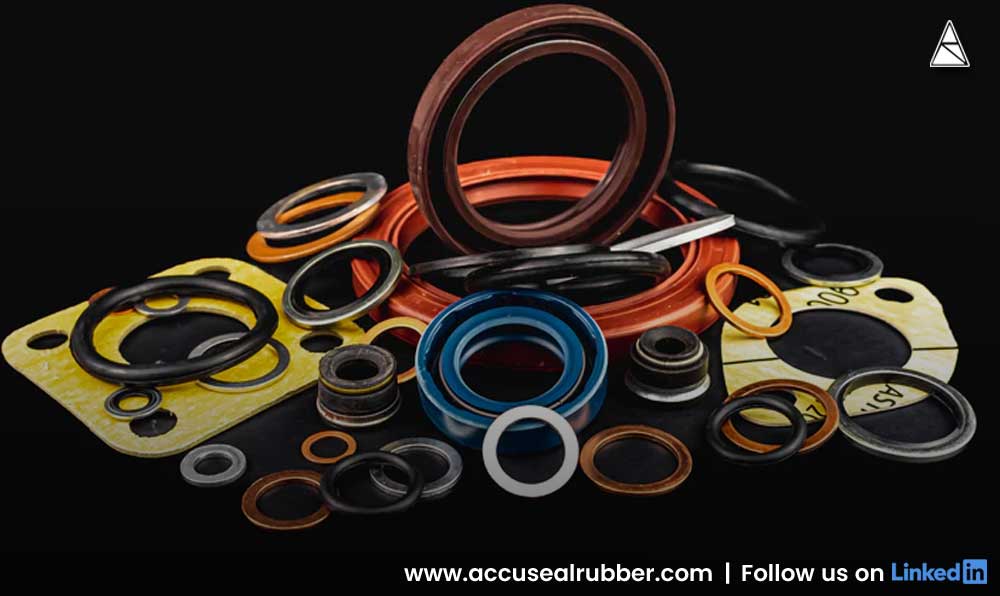When it comes to industrial and mechanical applications, ensuring leak-proof connections is crucial. But should you use a gasket or a seal? While these terms are often used interchangeably, they serve distinct functions. Understanding their differences can help you choose the right component for your specific needs.
1. What Is a Gasket?
A gasket is a mechanical component designed to fill the space between two or more mating surfaces. It prevents leaks from or into the joined objects while under compression. Gaskets are commonly made from materials like rubber, silicone, metal, cork, and fiberglass.
Key Features of Gaskets:
-
Used to prevent leaks between two static surfaces
-
Works by creating a pressure-tight seal when compressed
-
Available in various materials for different applications
2. What Is a Seal?
A seal, or oil seal, is designed to prevent fluid leakage and block contaminants from entering mechanical systems. Seals are often used in rotating, reciprocating, and static applications to maintain lubrication and prevent the entry of dust and debris.
Key Features of Seals:
-
Used in dynamic applications, such as rotating shafts
-
Helps retain lubrication and prevent contamination
-
Typically made from rubber, PTFE, or metal-reinforced elastomers
3. How Do Gaskets and Seals Differ in Their Applications?
The primary difference lies in their application:
-
Gaskets are used between stationary components, such as flanges, to prevent leaks.
-
Seals are used in applications with moving parts, like bearings and shafts, to maintain lubrication and block contaminants.
4. Which Material Is Best for Gaskets and Seals?
The material selection depends on the type of fluid, pressure, and temperature conditions:
-
Gaskets: Rubber, silicone, PTFE, cork, graphite, and metal.
-
Seals: Nitrile rubber (NBR), fluorocarbon (Viton), polyurethane, and PTFE.
5. What Industries Use Gaskets and Seals?
Both gaskets and seals are widely used in industries like:
-
Automotive – Engine gaskets, transmission seals
-
Aerospace – High-temperature seals, hydraulic gaskets
-
Oil & Gas – Pipe flanges, valve seals
-
Manufacturing – Hydraulic systems, pumps, and compressors
6. How Do You Choose the Right Gasket or Seal?
Consider the following factors:
-
Temperature Resistance: High-temperature environments require materials like graphite or PTFE.
-
Chemical Compatibility: Ensure the material withstands exposure to chemicals and oils.
-
Pressure Requirements: Higher-pressure applications may require metal-reinforced gaskets or seals.
-
Movement Type: Static applications require gaskets, while dynamic applications need seals.
7. Can Gaskets and Seals Be Interchanged?
No, gaskets and seals are not interchangeable. A gasket cannot effectively replace a seal in rotating or dynamic applications, and vice versa.
8. How Often Should Gaskets and Seals Be Replaced?
The lifespan depends on environmental conditions and operational stress. Routine inspections and maintenance are essential for preventing failures.
Conclusion
Choosing between a gasket and a seal depends on the application, material compatibility, and operating conditions. Whether you need to prevent leaks in static joints or protect dynamic components from contaminants, selecting the right product is crucial for performance and safety.
For high-quality gaskets and seals, Accuseal Rubber Inc. offers a range of solutions tailored to industrial and mechanical needs. Contact us today for expert guidance!

 Nick Parker
Nick Parker